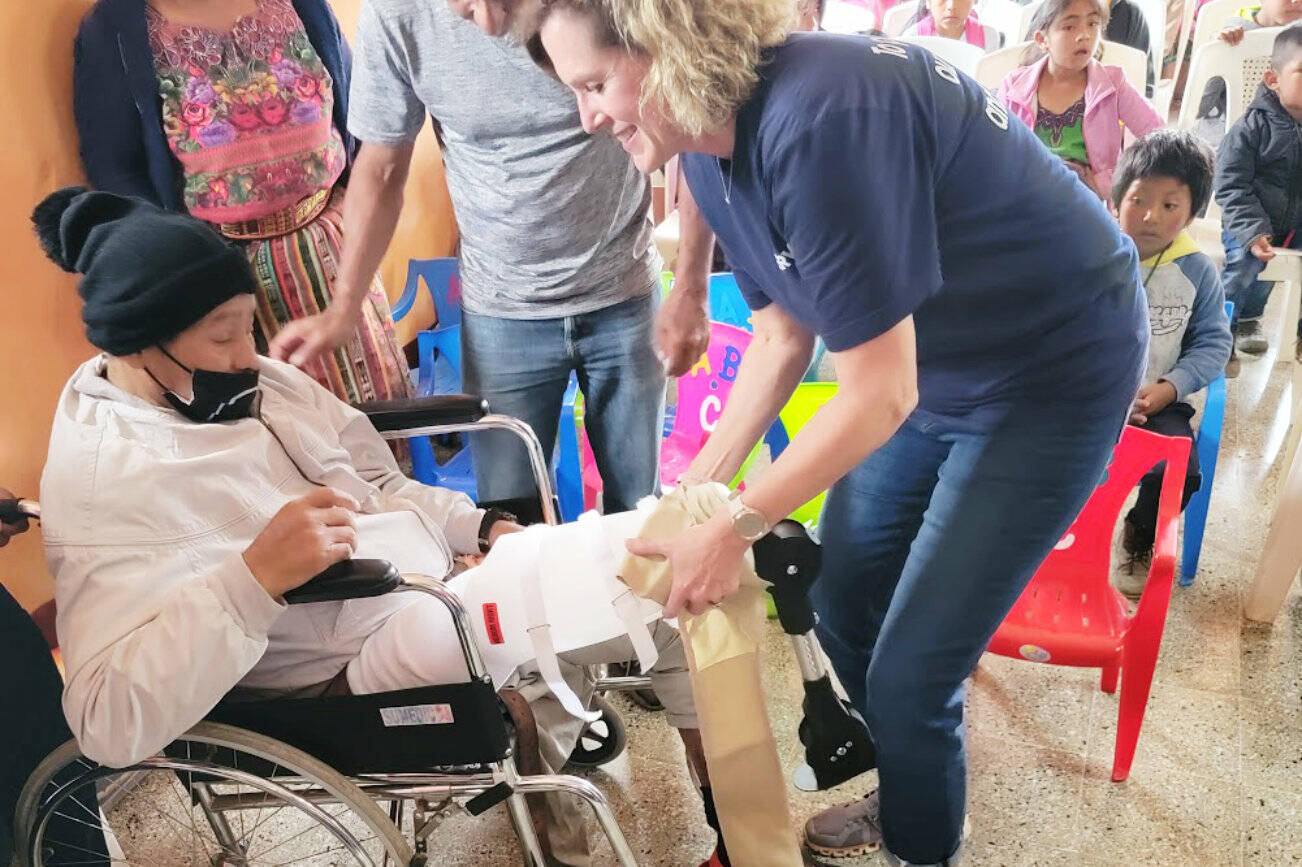Amputees in South America can walk again, and Enumclaw High School is part of that.
For the last six months, Enumclaw High School welding teacher Mark Berryhill and his students have been constructing rubber torsions, aiding in creating prosthetic legs for amputees in South America. Berryhill and his students use their Omax Water Jet Machine, an industrial machine to cut materials using a high-pressure water jet to create these rubber torsions.
Because Enumclaw High School has the proper equipment to create rubber torsions, they got connected with the organization Skilled Knowledgable Youth, otherwise known as SKY, founded by Brian Copes.
SKY works with various high schools throughout the U.S. to construct these prosthetic legs, which Copes takes to Mexico, Central America and Southern America, to people who cannot afford a prosthetic leg.
The rubber torsions allows for mobility in the ankle and the knee in prosthetic legs. Before EHS partnered with SKY about six months ago, this was the only part of the leg not made by one of Copes’ partnering high schools (more than two dozen help out), so he had to get them commercially.
Copes and Berryhill got connected when a former Enumclaw High School woodshop teacher, Bob Kilmer, who was involved with SKY, heard Copes talking about how no high school had a good enough water jet machine to help make these parts. Kilmer knew that Berryhill’s classroom had one, so he connected the pair.
Berryhill said he and his classes created about 60 rubber torsions for prosthetic legs in the last six months. Each leg requires two rubber torsions, so the students at Enumclaw High School have assisted in constructing about 30 prosthetic legs.
Copes said a prosthetic leg cost $800 to construct, but the labor is free because students across the U.S. construct each part of the prosthetic. Usually, SKY would make around 15 legs a year, but Copes said recently, since they’ve partnered with the construction company Thompson Thrift, and the tool retailer Harbor Freight, and have had help from various schools, including Enumclaw high school, they’ve made 60 legs in the time span of a year.
In addition to the 60 legs already fitted, Copes said SKY has funding to make 100 more legs.
Copes posts to Facebook and the SKY website when they go on trips down south, so when the pictures are online, Berryhill shows the kids what their work is going towards.
“They come in these homemade prosthetic legs which just looks horrible like they’re scrap parts out of a junkyard,” Berryhill said. “You can see the tears of the kids that are doing it now, getting to change these people and get them mobile again. I hope it will be our kids someday.”
Berryhill said he hopes to take a trip down to South America with Copes sometime this year. He said he wants to show the district that it is a safe place to visit so he can take students with him as Copes does.
Berryhill said he shows his student’s photos which Copes put on his Facebook, showing people with their new prosthetic legs. He said when the kids see their contribution to the project in use, it excites them.
Copes and his students have taken about 15 trips down to South America to deliver and fit the legs they have constructed. The first trip they ever took was in the 2011-2012 school year to Honduras. There they fit about 15 people with legs, but there were still many more people who needed legs. This last school year alone, they took a total of four trips down south to Mexico, Guatemala, and Nicaragua. There they fit about 15 people with legs, but there were still many more people who needed legs.
Copes said that 80% of amputees live in developing countries where there is not much wealth among the common population, so although doing this helps these communities in developing countries, Copes said this also teaches the kids a lot.
“In reality, the people these kids are serving are the ones who change our kid’s lives because the kids are learning how to give up themselves and be better citizens,” Copes said. “It teaches kids how to give up their time and talent to help others.”
Chickasaw, Alabama, where Copes and his students are located, has a poverty rate of 36%, which is comparatively high considering Enumclaw’s poverty rate of 8.7%, and the U.S. average poverty rate of big cities being 13.4%. Despite the poverty in Chickasaw, Copes said the kids are still learning to appreciate what they have.
“Here in Chickasaw, my kids think they’re in greatest need because they live in poverty,” Copes said. “But when they go over to Nicaragua or Honduras and see people living in true poverty, they come back with a different outlook on life.”


